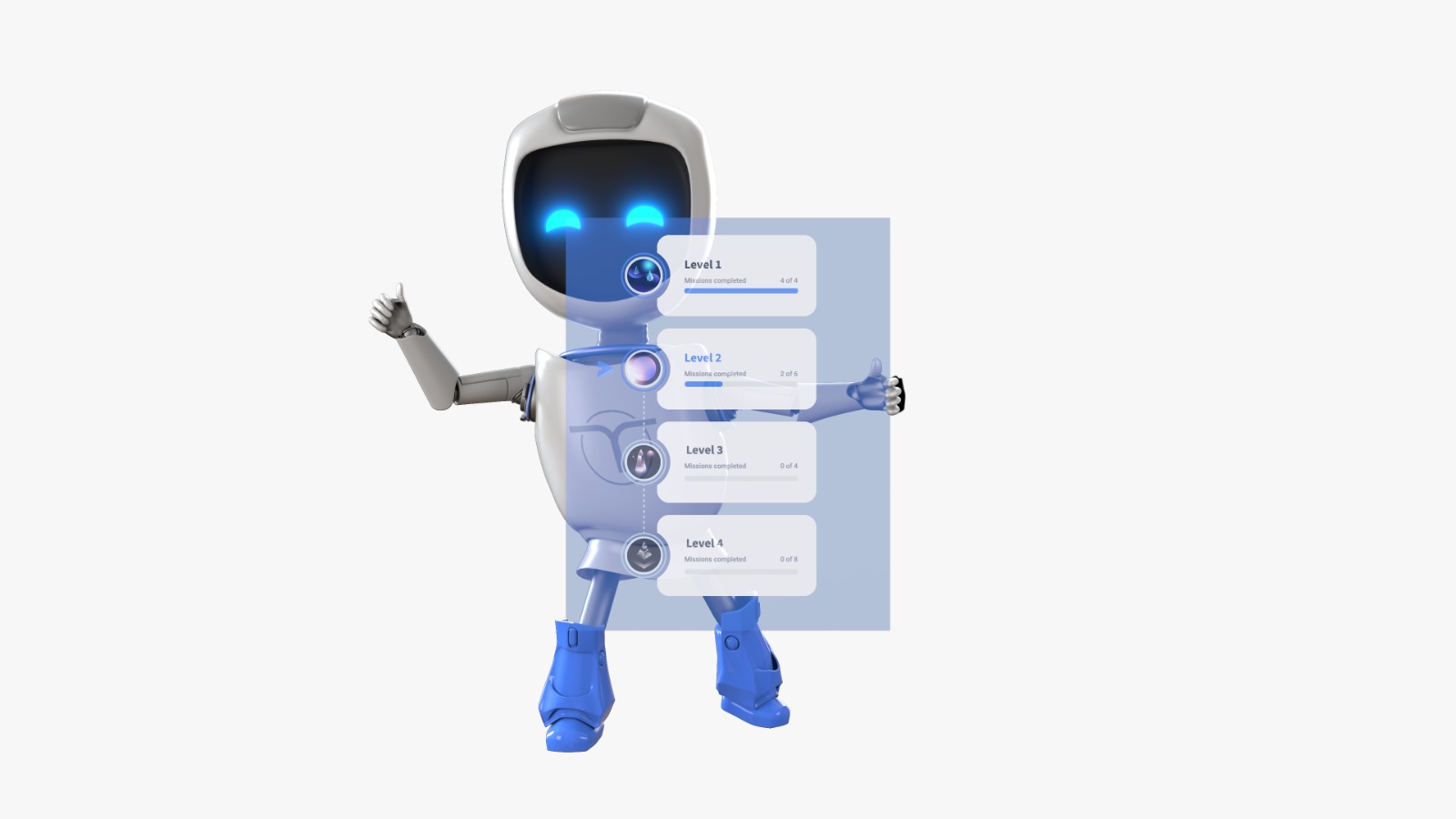Today, a company’s learning and development (L&D) strategy has to be quick and effective, that’s just the way of the world. There is less time for training than ever before, but quicker results are needed to keep companies moving at breakneck speeds.
The problem facing the modern workforce is that they’re expected to keep pace with the world. With workers being required to learn more skills to churn profits every day, microlearning is the best option to help them keep pace with learning requirements. However, even though most companies accept the idea of microlearning, they do not understand that it’s more about contextual learning.
The Importance of Contextual Microlearning
Microlearning can create extreme efficiency in learning across your company. It transitions your employees from unskilled to skilled performance. With contextual learning, however, microlearning takes an even bigger jump. Contextual learning is learning in which employees apply what they learn in real-life circumstances, or when trainers use examples or exercises that are relevant to the participant.
To understand contextual learning, think of a gearbox. Gearboxes use levers to shift the car into the gear that it needs given the particular speed it is traveling. Similarly, contextual learning gives each employee or department the training they need when they need it. It doesn’t just dump information on them.
Contextual Learning Motivates Employees
Regular training methods like long videos, quizzes, and PowerPoint presentations aren’t motivating. They don’t drive employees to take action and take initiative. However, with contextual microlearning learning, training is split up into chunks and real-life examples are used that are relevant to the learner.
Through this approach, contextual learning serves the need of individuals and doesn’t waste their time. With short chunks of information, employees can learn quickly and implement the things they learn through participating in activities on apps or by completing short tasks.
It’s a Different Learning for a Different Time
Training has to compete with a lot of other things with learners’ attention. This is a critical point of conflict. Training shouldn’t have to compete with other things. It should be the primary point of attention.
Also, with the rising number of digital natives in the workforce, more learners are accustomed to accessing information in the form of contextual microlearning. You can therefore meet them on specific terms and your mission will become much easier to accomplish.
With the coronavirus pandemic, it’s increasingly apparent that more companies are looking to accommodate remote work permanently. In many cases, this has brought up a lot of challenges when it comes to training.
Remote working or, at least, a hybrid form, is here to stay, and therefore companies need to adjust to microlearning to maximize efficiency. That’s why contextualizing microlearning is so important; resources need to be used optimally to reduce costs and improve ROI.
Agile Learning is the Future
The contextual learning approach is of great help when you want greater information retention and greater engagement. It satisfies the needs of the individual learner and answers important questions. It also establishes a workflow that emphasizes continuous improvement and the enhancement of certain skills.
The contextual microlearning approach allows for a much more frictionless workflow. Since it is available when needed, it’s much more effective for the improvement of retention and application.
In other words, contextual microlearning allows workers to receive the most efficient training and education possible, only at times when they truly need it and are most likely to pay deep attention to it. This enables companies to streamline their learning and development processes while preventing the waste of precious resources and time. When implemented correctly, contextual microlearning tends to show a significant business impact quickly.
How to Implement Contextual Learning in Your Training Design
Typically, contextual microlearning is needed in situations when there is a skills gap amongst employees that is creating a bottleneck for the company.
In such situations, contextual microlearning can be used to give the employees the skills they need to successfully complete tasks that allow the company to resolve the bottleneck.
Here are a few ways to effectively implement contextual microlearning.
1. Find Out What is Needed by Your Organization
Not all trainings in your organization need to be transformed into contextual microlearning models. You need to determine the resources that have to be available to your team all the time and focus on them. This way, you’ll save time, energy, and money across your organization.
Any data that you may have about common issues across your organization should help in this decision. Talk to your team and even ask for suggestions. That way, you can have the best idea of what they will need.
2. Assess Successes and Failures
You also need to figure out what is currently working and what is not. For example, if your managers are successfully delegating to their team, why isn’t the team learning? Are there any workplace conflicts? Answering these questions will help you decide what your organization needs and which areas are working perfectly.
3. Organize Learning Categories and Sub-Categories
After deciding which type of training will be appropriate to include, the information should be organized into categories and subcategories. This will allow for the information to be more easily accessible. As an organization or a company, it’s common for you to train your employees on a wide variety of topics. To group them clearly and into separate categories is a best practice. That way, you’ll be able to recommend training more easily and send people what they need at the correct time.
Organizing different categories of training can also result in better consolidation. Just-in-time learning will be more effective with this clearer categorization.
4. Split Up the Training into Chunks
Drawn-out explanations usually lose people’s attention because people become bored and stop listening. That’s why seminars and long conferences don’t really offer what they used to, to employees. Hence, reducing information to its basics and creating digestible bits of information is a better course of action.
For more effective microlearning, you should include details that are pertinent and avoid lengthy content. Unnecessarily lengthy content will not only lose an individual’s attention, but it won’t produce a high ROI.
Splitting the training into chunks also means that it’ll be more easily searchable. That way, your team won’t have to swipe through an hour of training to get to the bit that’s important. The faster that your employees will be able to access learning, the happier they will be.
The happier that they’ll be, the faster they’ll be able to learn.
5. Provide Examples and Scenarios Instead of Information (Gamification)
The modern workforce is more responsive to examples that relate to their lives than ones that don’t. Using irrelevant topics to teach them can result in information going in one ear and coming out the other. Hence, it’s better to work with hypothetical scenarios and examples that appeal to them.
The best way to go about this is to focus on learning examples that can result in tangible applications. For example, focus on examples that can lead to practice opportunities. A bulleted list of facts may be useful in the short term, but nothing beats learning by doing.
This falls into another category of microlearning which is gamification. Giving your employees a specific task to complete where they can track their progress and self-evaluate is a great way of microlearning. It allows each individual to complete at their own pace and learn specifics about the application of any training.
6. Find Out Where Help is Needed
Today, the world’s businesses are all about leveraging their core competencies and establishing loyal customer bases. Hence, microlearning will work best for any organization when it is applied to areas that need work.
For the best microlearning implementations, contextual implementation is important. A company needs to find out which areas would be best served by third-party providers. A good way to go about it is to find where training gaps exist.
Other questions you should ask your company include:
- Does your company employ processes that are covered by custom training?
- Which skills in your company aren’t specific to your field, but more universally applicable?
In an era when training budgets are tight and remote work is at its peak, microlearning is needed even more. If companies want to grow rapidly and increase their ROI, microlearning is the way to go. There are no two ways about it. In this regard, contextual microlearning is the answer that many are looking for. It works for everything from academic writing to computer programming.
7. Work with a Valuable Partner to Implement Contextual Microlearning
Organizational health and progress is a multi-faceted thing. No one has all the pieces of the puzzle. Hence, you need a valuable partner to give you the tools and platform you need to design your own program, like Code of Talent.
Contextual microlearning is an essential implementation to make your L&D strategy more effective. It not only allows you to make use of resources more efficiently, but creates value for the employees that need it most. It can propel your company forward and set it on a path of self-policing growth for years.
Take Away
Implementing the right L&D strategies is critical for getting the most out of your training budgets and helping your company to operate at its highest possible level of efficiency. Contextual microlearning has proved to be the single most efficient training method because it gives employees highly relevant training at exactly the right time for them in easy-to-process chunks. If you are ready to streamline your L&D process, feel free to get in touch with us today.
At Code Talent, we will give you a platform that will help you design your own microlearning program for the modern workforce. Explore Code Talent today and introduce your workforce to the most effective learning method out there.





